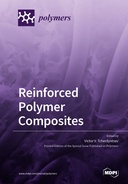Explore

Reinforced Polymer Composites
0 Ungluers have
Faved this Work
Login to Fave
This book, consisting of 21 articles, including three review papers, written by research groups of experts in the field, considers recent research on reinforced polymer composites. Most of them relate to the fiber-reinforced polymer composites, which are a real hot topic in the field. Depending on the reinforcing fiber nature, such composites are divided into synthetic and natural fiber-reinforced ones. Synthetic fibers, such as carbon, glass, or basalt, provide more stiffness, while natural fibers, such as jute, flax, bamboo, kenaf, and others, are inexpensive and biodegradable, making them environmentally friendly. To acquire the benefits of design flexibility and recycling possibilities, natural reinforcers can be hybridized with small amounts of synthetic fibers to make them more desirable for technical applications. Elaborated composites have great potential as structural materials in automotive, marine and aerospace application, as fire resistant concrete, in bridge systems, as mechanical gear pair, as biomedical materials for dentistry and orthopedic application and tissue engineering, as well as functional materials such as proton-exchange membranes, biodegradable superabsorbent resins and polymer electrolytes.
This book is included in DOAB.
Why read this book? Have your say.
You must be logged in to comment.
Rights Information
Are you the author or publisher of this work? If so, you can claim it as yours by registering as an Unglue.it rights holder.Downloads
This work has been downloaded 109 times via unglue.it ebook links.
- 109 - pdf (CC BY) at Unglue.it.
Keywords
- 3D printing
- Bamboo
- bamboo-plastic composites (BPCs)
- bearing
- bifunctionally composite
- carbon fiber reinforced polymers
- carbon fibers
- chemical composition
- CMC
- co-injection molding
- compatibility
- Composite materials
- composites
- damage progression
- damping properties
- DLP
- Dopamine
- double-network hydrogels
- failure modes
- fiber orientation distribution (FOD)
- fiber reinforced plastics (FRP)
- fiber-reinforced polymer
- Film
- flat slab
- friction and wear
- glass fiber reinforced polymers
- glass fibers
- glass fibre
- glass-flax hybrid coposites
- halloysite nanotubes
- heat treatment
- high temperature fuel cell
- hybrid composites
- hydrogel mechanical properties
- impregnation
- kenaf fibre
- lignocellulose
- low velocity impact
- maleated natural rubber
- Mechanical properties
- mechanical stability
- micro-computerized tomography (μ-CT) scan technology
- Modification
- n/a
- Na2CO3
- nanocomposites
- nanoindentation
- natural fibers
- natural rubber
- natural rubber latex
- palm stearin
- PEEK composites
- PET fiber
- physico-mechanical properties
- pin joints
- pinned joints
- poly (lactic acid) (PLA)
- polycarbonate
- polyetherimide
- polyethersulfone
- polymer-matrix composites
- polymer–nanoparticle interactions
- polyphenylene sulfone
- polysulfone
- PP
- PVA
- recycling
- reinforcement mechanism
- reinforcements
- Rubber
- rubber composite
- salt fog aging
- scanning electron microscopy
- self-lubricating bush
- short jute fibers
- silica nanofiber
- Stability
- sulfonic acid based proton exchange membrane
- Surface modification
- surface modification of staple carbon fiber
- surface treatments
- synthetic fibers
- Technology, engineering, agriculture
- Technology: general issues
- tensile properties
- thermal decomposition kinetics
- two-way shear
- waste bamboo fibers
- wastes rubber
Links
DOI: 10.3390/books978-3-0365-0969-3Editions

